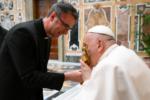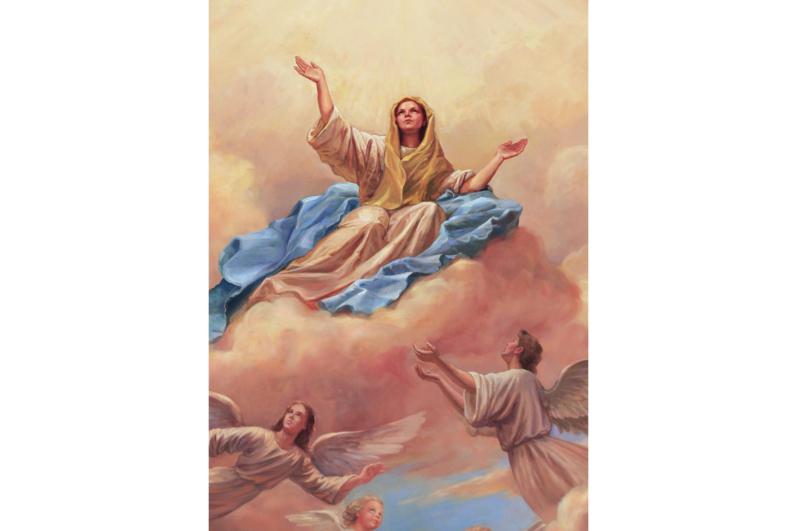Ascension, Assumption: What's the difference?
(OSV News) -- What's the Ascension? What's the Assumption? What's the difference? The meaning of these two great feasts is sometimes a bit blurry.
-- The solemnity of the Ascension
The Ascension celebrates the ascension of Jesus into heaven and is currently celebrated in the United States on the Seventh Sunday of Easter.
Toward the end of the fourth century, St. Augustine referred to its observance as universal and long-standing. In the first Christian centuries, however, the Ascension may have been celebrated together with the Resurrection and Pentecost -- three great feasts rolled into one.
The ascension of Jesus to the right hand of God the Father is verified in Scripture. Mark, ending his Gospel with Christ's commissioning of his disciples, says, "after speaking to them, the Lord Jesus was taken up into heaven and took his seat at God's right hand" (16:19). In John 20:17, Jesus warns Mary Magdalene, "Do not cling to me, for I have not yet ascended to the Father. Rather, go to my brothers and tell them: 'I am ascending to my Father and your Father, to my God and your God." Tradition suggests that Jesus ascended into heaven at Mount Olivet near Jerusalem.
Theological understanding of the ascension of Jesus evolved over the centuries. Originally, it was seen as God's action on behalf of Jesus -- a vindication over Christ's enemies and over death. Eventually, it was understood that Jesus -- as God -- ascended on his own power to heaven and glory. The Ascension marked the end of the Lord's visible ministry on earth. Jesus had to ascend, as he told his grieving disciples, in order to send them the Holy Spirit.
Vivid and colorful celebrations once taught the great lessons of the feast. In England, banners depicting Christ as a lion led prayerful processions in which a hideous dragon banner representing Satan was ignominiously relegated to the procession's end. On Ascension Day, in some medieval churches, an image of Christ was hoisted above the altar through openings in the church roof. Meanwhile, a picture of the devil plunged from the rafters to present the feast day's doctrine dramatically.
-- The solemnity of the Assumption of the Blessed Virgin Mary
The Assumption of the Blessed Virgin Mary is celebrated on Aug. 15 around the world. The church teaches that God took Mary -- body and soul -- to heaven, sparing her body from corruption in recognition of her immaculate conception and her motherhood of the Son of God. Mary was, after all, "full of grace." Scripture referred to her as the "highly favored daughter" (Lk 1:28).
Almost nothing is known for certain about the death and burial of the Lord's mother, and the question remains open of whether Mary died before or after was assumed. Scripture does not refer at all to Mary's post-Resurrection life. The Catechism of the Catholic Church describes Mary's assumption as taking place "when the course of her earthly life was finished" (No. 966). Early church fathers expressed different views about whether Mary had died or was "taken up" before actual death.
Whether she was assumed into heaven, however, appears not to have been a subject of debate. Two cities -- Jerusalem and Ephesus -- claimed that she lived and died there. News of her empty grave and assumption began to circulate right after her death. Some reports say that she died about three years after Jesus' resurrection; others speculate that it was about 15 years after Jesus died and rose.At the fifth-century Council of Chalcedon, Emperor Marcian asked to have and protect Mary's remains. St. Juvenal, bishop of Jerusalem, told the emperor that although Mary died in the presence of all the apostles, her tomb was later found empty by St. Thomas. The apostles concluded that her body was taken up to heaven.- - - Catherine Odell lives in Indiana and writes extensively on catechetical matters.



















